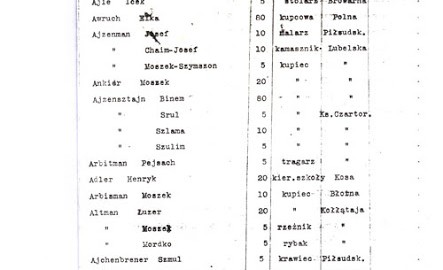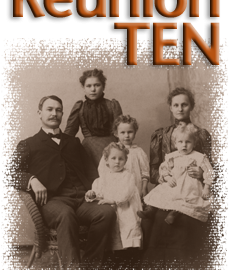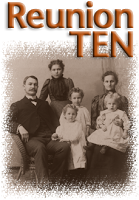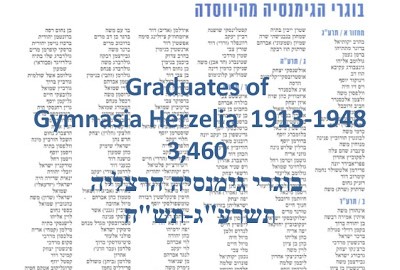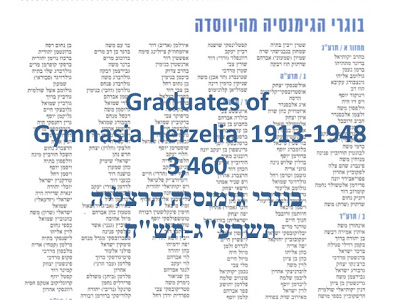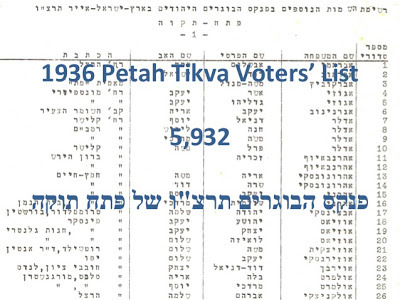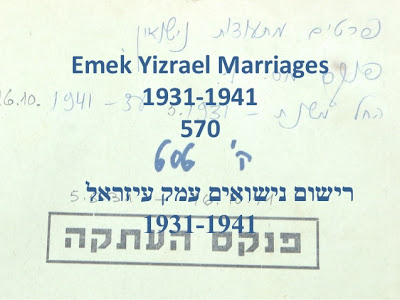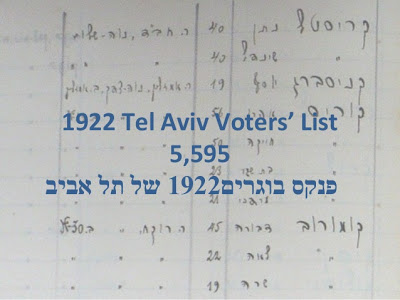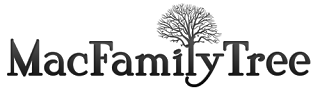I’m going to start with a digression. I’m not sure if you can digress before you have a main topic, but here we go.
In the past, when one did research into their Jewish relatives from Eastern Europe, the assumption was sometimes that there were no records that survived the Holocaust. This is not just a baseless assumption – I’ve personally been told many times by archivists in Eastern European countries that “All Jewish records were destroyed in the war.” When receiving such responses I sometimes wonder which of the following possibilities is the actual case:
- The Jewish records were, actually, destroyed (it did happen sometimes).
- The archivist knows exactly what records exists, but doesn’t care to tell you about them.
- The archivist doesn’t differentiate between Jews and non-Jews, and even though records were kept separately in the past, does not index them separately and thus is just saying there are no separate Jewish records (or a previous archivist did this, probably during the communist period, and this archivist doesn’t know the difference).
- The archivist is ignorant of what Jewish records exist.
So how do you know what records exist for the town you’re researching? For records in (or in what once was) Poland, you can try searching JRI-Poland to see if they have indexed records for your town. There is actually a list of towns on the JRI-Poland web site, and if you follow the link to the town page you can find out many of the records that have been indexed for that town. Some records may not be listed, however, so it’s always a good idea to contact the town administrator and ask if there are other records as well (which might cost money).
One of the most important sites for Jewish genealogists is The Miriam Weiner Routes to Roots Foundation (RTR) site. Miriam Weiner has worked to inventory the Jewish holdings of archives across Poland, Ukraine, Belarus, Lithuania and Moldova (and some in Romania). This information was originally published in two books covering Poland, and Ukraine and Moldova, which are now largely out of date, but the information is updated and expanded on the web site. Whenever new Jewish records from specific towns are located, they are added to this database.
In other words, if you want to see if birth records exist from your ancestral town, you search for the town, and can see what records are known to exist for that town. The records that exist may be in the local archive, might be in an archive in a country that used to be the same country as where your town is (such as the L’viv, Ukraine archives for records of towns in Poland), or could be in archives like CAHJP in Jerusalem.
For example, see the records available for Kanczuga, Poland (9 records groups), Odessa, Ukraine (16 records groups), and Krakow, Poland (30 record groups – including one from CAHJP).
I’m happy to see that the site has been improved, and it is now easier to get to the search interface.
In addition to the archival catalog, RTR has recently started added it’s own name databases.
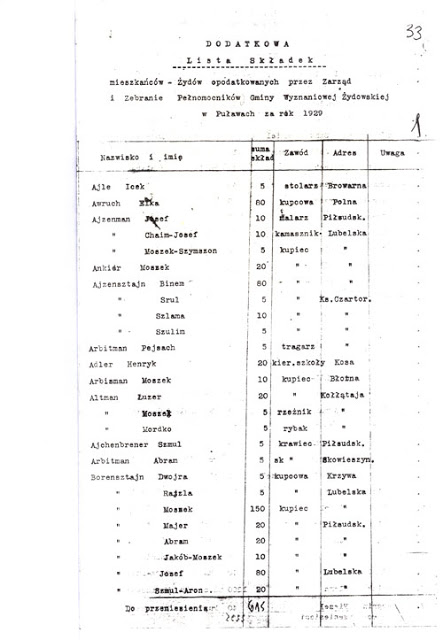 |
| 1929 Pulawy Taxpayer List |
When name databases exist for a town, there will be a link at the top of the town archival holdings page. The following name databases were added as the first batch last month:
- 1929 List of Jewish taxpayers from Pulawy, Poland (460 names)
- 1928 List of Jewish taxpayers from Krasnystaw, Poland (560 names)
- 1936 List of Jewish taxpayers from Turobin, Poland (121 names)
- 1990 List of burials in Beltsy Jewish Cemetery (Moldova) (4,600 names approx)
- 1858 — List of heads of households in the town of Cherkassy, Ukraine, from the Revisky Skasky/census lists (307 names)
- 1894 – 1918 Heads of Jewish families that had a status of Meshchanin (petty bourgeois) in Odessa (4,505 names)
- List of people who died in Belogorodka, Ukraine during the Holocaust (link to PDF)
- 1941 / List of Holocaust victims from Ozarintsy, Ukraine (69 names)
- 1941-1942 / List of Holocaust victims from Yaryshev, Ukraine (356 names)
- 1941-1942 / List of Holocaust victims from Yaruga, Ukraine (100 names)
- 1941-1944 / List of Holocaust victims from Mogilev Podolskiy, Ukraine (750 names)
- 1941-1944 / List of Holocaust victims from Kirovogrod (formerly Elizabetgrad), Ukraine (450 names)
- 1860-1884 / Index to Bialystok Jewish births (in process)
- 1889-1918 / Index to Family List of Jews in Priluki, Ukraine (approximately 600 families) (in process)
I’ve linked directly to the database search pages for each database.
This is an interesting development for RTR, and it will be interesting to see how these new databases develop. Hopefully they will add a single search interface for all the name databases in the future.
It’s always exciting to see new databases made available for Jewish genealogy. The previously mentioned JewishGen Memorial Plaques Database and four new databases in IGRA’s All Israel Database, as well as eight new databases added to Gesher Galicia’s All Galicia Database (I hope to post about this in the future), and these new databases from RTR all contribute greatly to Jewish genealogy. Certainly an exciting time to be involved in Jewish genealogy.
